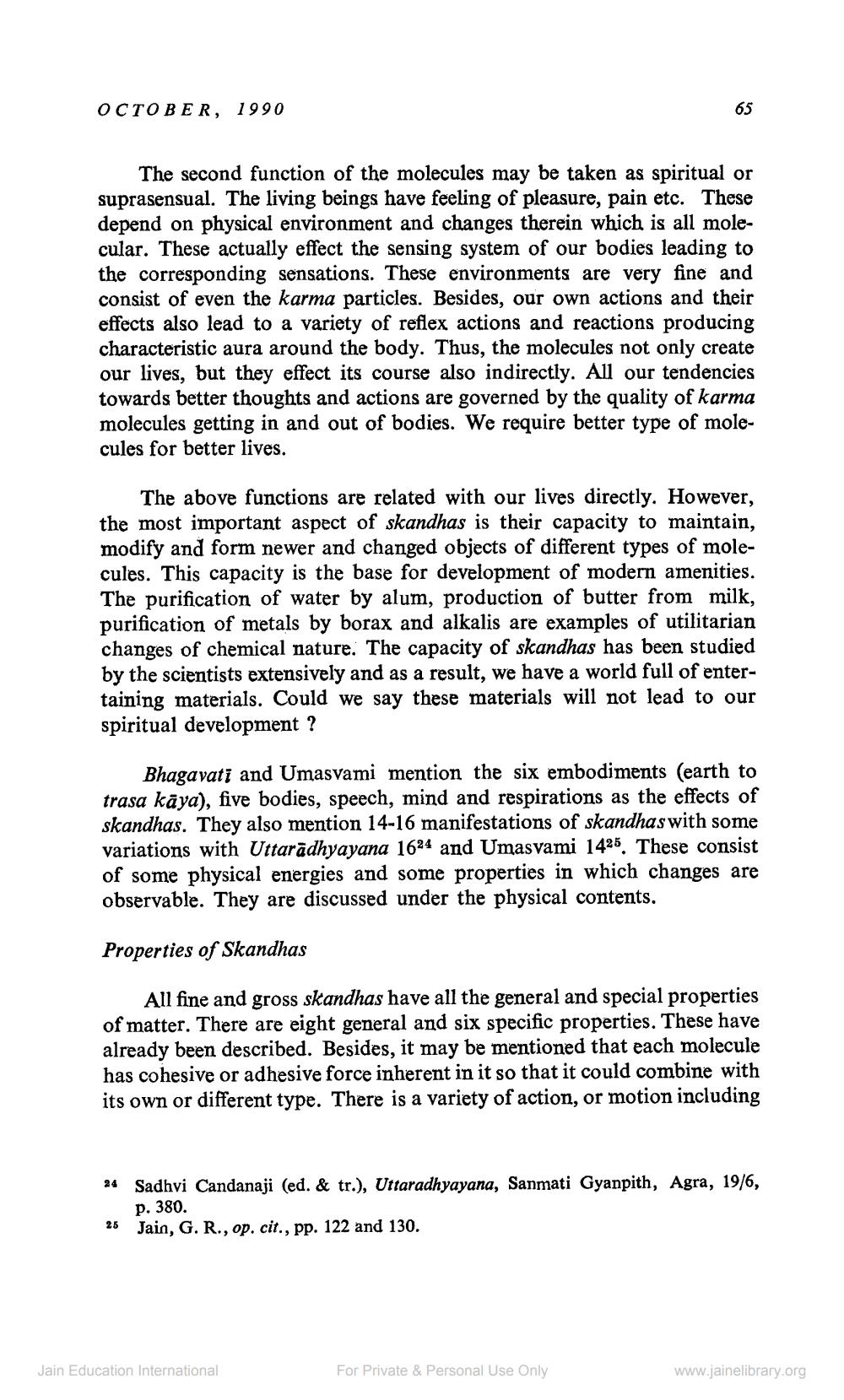________________
OCTOBER, 1990
The second function of the molecules may be taken as spiritual or suprasensual. The living beings have feeling of pleasure, pain etc. These depend on physical environment and changes therein which is all molecular. These actually effect the sensing system of our bodies leading to the corresponding sensations. These environments are very fine and consist of even the karma particles. Besides, our own actions and their effects also lead to a variety of reflex actions and reactions producing
haracteristic aura around the body. Thus, the molecules not only create our lives, but they effect its course also indirectly. All our tendencies towards better thoughts and actions are governed by the quality of karma molecules getting in and out of bodies. We require better type of molecules for better lives.
The above functions are related with our lives directly. However, the most important aspect of skandhas is their capacity to maintain, modify and form newer and changed objects of different types of molecules. This capacity is the base for development of modern amenities. The purification of water by alum, production of butter from milk, purification of metals by borax and alkalis are examples of utilitarian changes of chemical nature. The capacity of skandhas has been studied by the scientists extensively and as a result, we have a world full of entertaining materials. Could we say these materials will not lead to our spiritual development ?
Bhagavatī and Umasvami mention the six embodiments (earth to trasa kāya), five bodies, speech, mind and respirations as the effects of skandhas. They also mention 14-16 manifestations of skandhas with some variations with Uttarādhyayana 1624 and Umasvami 1425. These consist of some physical energies and some properties in which changes are observable. They are discussed under the physical contents.
Properties of Skandhas
All fine and gross skandhas have all the general and special properties of matter. There are eight general and six specific properties. These have already been described. Besides, it may be mentioned that each molecule has cohesive or adhesive force inherent in it so that it could combine with its own or different type. There is a variety of action, or motion including
u
Sadhvi Candanaji (ed. & tr.), Uttaradhyayana, Sanmati Gyanpith, Agra, 19/6, p. 380. Jain, G. R., op. cit., pp. 122 and 130.
25
Jain Education International
For Private & Personal Use Only
www.jainelibrary.org




